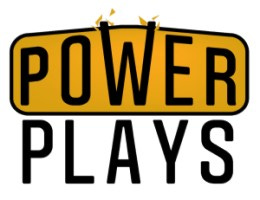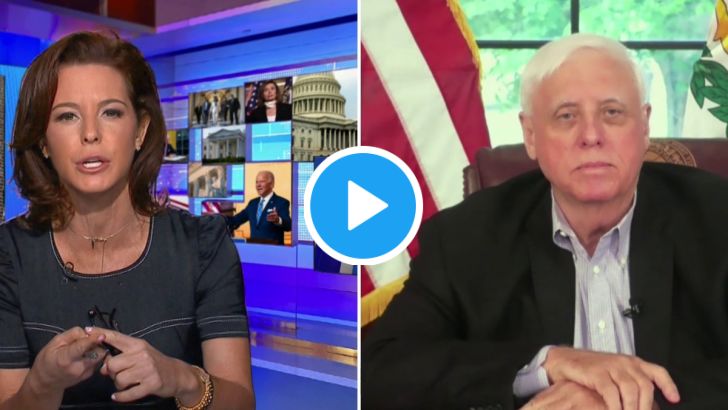The NCAA has failed transgender athletes
Inclusive policies mean nothing if you're too feckless to enforce them.
Hello! I hope that you’re doing well. Welcome to Power Plays, a no-bullshit newsletter about sexism (etc.) in sports, written by me, Lindsay Gibbs.
Today, we’re looking at the continuing onslaught of anti-transgender legislations that are ravaging the nation, and focusing in on how dangerous the NCAA’s inaction truly is. It’s a lot, but it’s important to try to connect these dots.
Okay, friends. Let’s do this.
The NCAA said it would protect trans athletes. Instead, its protecting itself.
This year, instead of prioritizing recovering from a deadly pandemic, state legislators across the nation have spent their extremely limited hours, resources, and political capitol fighting to take rights away from transgender people, primarily transgender children.
As we have previously covered in Power Plays, many of these bills focus on banning transgender girls from competing in girls sports.
So far, more than 30 state legislatures have introduced well over 100 anti-transgender bills. Five states — Alabama, Arkansas, Mississippi, Tennessee and West Virginia — have already signed trans sports bans into law. In Montana and Florida, where the GOP snuck the trans sports ban in at the last minute by attaching it to a charter school bill, the bigoted bills have passed through both chambers, and await signatures from their governors. South Dakota governor Kristi Noem used her authority to issue a de-facto trans sports ban via two executive orders.
The situation is dire.
So far, at least 110 major businesses have signed a letter opposing this relenting onslaught of legislation, to no avail. Recent history tells us there is one organization that hold cards powerful enough to stop such bills in their tracks.
Unfortunately, that organization is the NCAA.
Five years ago, the NCAA adopted a new anti-discrimination policy insisting that all NCAA host sites prove that they can “provide an environment that is safe, healthy and free of discrimination,” and pressured North Carolina to repeal its anti-trans “bathroom bill,” HB2, by removing March Madness games from the state.
This year, as the anti-trans bills popped up in state after state, many hoped the NCAA’s anti-discrimination policy would serve as a deterrent. Last month, amid mounting public pressure, the NCAA Board of Governors released a statement saying that it “firmly and unequivocally supports the opportunity for transgender student-athletes to compete in college sports” and that it would to “closely monitor these situations to determine whether NCAA championships can be conducted in ways that are welcoming and respectful of all participants.”
But this week, the NCAA proved that its words were as empty as its women’s weight rooms when it named colleges in Arkansas, Alabama, and Tennessee as regional host sites for the women’s softball championship.
“Trans athletes don’t just need nondiscrimination policies, they need the people and institutions in power to actively enforce those policies,” Ashland Johnson, founder of The Inclusion Playobook, told Power Plays.
“If the NCAA is serious about inclusion, nondiscrimination, and athlete wellness, it would stop just putting out these ambiguous statements and take clear action. It needs to lead.”
Transgender sports bans are a ‘solution’ to a problem that doesn’t exist
Before I go any further, I want to make sure we are all on the same page: Trans girls and women are NOT taking over girls and women’s sports. There is real, actual data to back that up — according to the Center for American Progress, there is zero correlation between trans-inclusive policies in youth sports and a decrease of participation of cisgender girls in sports.
If you’re still doubting whether that’s true, let’s take another trip to my home state of North Carolina.
Last month, three republican state senators introduced a bill that would, according to Slate, “prohibit all gender-affirming health care for children and adults under the age of 21” and require “all ‘government agents,’ including school officials, to report a child’s ‘gender dysphoria’ or ‘gender nonconformity’ to their parents—effectively requiring schools to out LGBTQ students.”
Much to my surprise given the state’s history, the bill went nowhere. That’s because, according to The News & Observer, Tim Moore, the fervently anti-LGBTQ speaker of the NC House of Representatives, had staffers look for concrete proof in the state that transgender girls were dominating and decimating girls’ sports, and they came up empty.
Moore said what actually took place behind the scenes is that legislative staffers reached out to sports regulatory organizations to find out how large of a problem North Carolinians had with having transgender females playing on female sports teams.
Moore said they found no complaints.
“We had no examples of where this is really a problem and I’m a believer that you shouldn’t pass legislation unless there’s a problem you’re trying to address,” Moore said. “I mean, obviously, these things can spin up and get really controversial and all of that so you know before you go down that road, there needs to be, I would say, an articulated problem.”
Still need proof? Laura Stargel — the daughter of Florida state Sen. Kill Stargel, who sponsored Florida’s transgender sports ban — wrote a piece in the Orlando Sentinel opposing her mother’s bill, and noted that this was not a problem in Florida, either.
In 2013, the Florida High School Athletics Association developed a process to review transgender students’ requests to play on teams that match their gender identity. Since then, only 11 transgender students have petitioned the FHSAA to play. Nevertheless, the Legislature dedicated significant time to eviscerating that policy and replacing it with a blanket ban. That is time and resources that could have been used to focus on unemployment, health care or the housing crisis in a pandemic.
And West Virginia governor Jim Justice, who actually signed his state’s transgender sports ban into law last month, admitted live on MSNBC to Stephanie Rule that he couldn’t provide any example of transgender girls taking over girls’ sports in his own state.
Not one!
An extremist hate group is behind these transphobic laws, which are essentially a ‘eugenics project’
Now that we’ve established that these bills are built on a house of lies, it begs the question: Why in the world do these bills exist, and why are there so many of them debuting at once?
Well, friends, this may shock you, but the mass attack is not a coincidence. In fact, it’s a very coordinated campaign. As ACLU attorney Chase Strangio told Saeed Jones in GQ, these bills and the groups behind them are simply an offshoot of the failed fight against marriage equality:
The contemporary origin is that the groups who are pushing these bills are the same groups that were funneling tons of resources into stopping marriage equality, fighting to put bans on marriage on the ballot in the first decade of the 2000s. And then when marriage equality became the law through the Supreme Court's decision in November of 2015, essentially all of those groups that had invested millions and millions of dollars in stopping that shifted all their resources to attacking trans people. Very swiftly they were ready to go.
While most of the bills have titles such as, “The Protect Women’s Sports Act,” the forces behind them have absolutely no history as advocates of women’s sports. They do, however, have an extensive history of fighting to take away rights from LGBTQ individuals.
In Slate, Mark Joseph Stern honed in on one of the primary groups ghostwriting these bills, theAlliance Defending Freedom:
Over the last 28 years, the ADF has defended laws prohibiting same-sex intimacy; opposed marriage, adoption, and surrogacy for same-sex couples; attacked LGBTQ non-discrimination laws, as well as bans on conversion therapy for minors; argued in favor of laws that require transgender people to undergo sterilization before legally changing their gender; challenged access to contraception; and supported the criminalization of abortion at any stage of pregnancy. Its work stretches beyond the United States; ADF has, for instance, championed Belize’s archaic anti-sodomy law, which allows for the persecution and imprisonment of gay people. The ADF’s overarching position on gay people is that they should either be converted to heterosexuality or fired from their jobs and imprisoned because of their sexual orientation. This stance has earned the group a controversial designation as a hate group by the Southern Poverty Law Center.
These bills are not about protecting women’s sports. Their only purpose is to dehumanize, shame, and discriminate against transgender kids.
Unfortunately, they succeed in that regard. Studies show that transgender youth who live in places with anti-trans policies, such as trans sports bans, are more likely to be suicidal and less likely to graduate high school than their trans peers who live in places with trans-inclusive policies. This is true for athletes and non-athletes.
As Strangio said in GQ, this is essentially a “murderous project of genocide and eugenics.”
I think the goal of these bills is to stop people from being trans. And they will say as much. They will say, "It's harmful to be trans. There's too many trans people." I'm like, "There's not enough." They'll say, "Well, 40 years ago, there weren't as many trans people." And I'm like, okay, well, first of all, there were, it's just that people did not have as many opportunities to live and self-determine in ways that were validating and authentic. But if the response is, "There's too many of a population, you must eradicate it," that's a eugenics project.
As for the NCAA, it all comes back to amateurism
There are a lot of similarities between 2016 and today. Five years ago, the Alliance Defending Freedom was also the driving force behind HB2. Five years ago, plenty of big-name companies, including PayPal, were pulling their business from North Carolina over the transphobic law. Five years ago, amid mounting public pressure, the NCAA released a warning statement stressing the importance of holding NCAA events at sites that were safe, healthy, and free of discrimination.
But five years ago, the NCAA — which, it should be noted, has had a trans athlete inclusion policy for 11 years — followed up its statement with concrete action. That September, it officially pulled seven championship events scheduled to take place in NC during the 2016-17 season from the state. In early 2017, it reinforced that is would not schedule any NCAA championship events in the state until at least 2022 if HB2 was not repealed. Given that ultimatum, North Carolina’s congress finally (at least partially) repealed the law.
This year, the NCAA is remaining on the sidelines.
Behind the scenes, there has been a lot of speculation that the NCAA’s inaction is tied to the partisan nature of the issue, and the fact that the NCAA is currently involved in an intense political fight over the future of amateurism.
After the NCAA issued its statement in April insisting it supported the transgender community, an athletic administrator told the Associated Press went on the record with this suspicion:
“Karen Weaver, a former college field hockey coach and athletic administrator now on the faculty at Penn, called the NCAA statement as “wishy washy as you can get.”
Weaver said the NCAA is in a precarious position because of separate, highly charged issues that are likely to impact its bedrock amateurism model: it is depending on Congress to create legislation allowing athletes to make money on use of their name, image or likeness. The Supreme Court also is considering a case weighing whether the NCAA’s prohibition on compensation for college athletes violates federal antitrust law.”
The NCAA’s statement on transgender sports bans was “carefully worded,” Weaver said, “and I think it’s a tenuous time to be taking any kind of stance that might be viewed as political because they’re trying to craft their future in the Congress and Senate with the NIL legislation.”
“They’re trying to not tick off any potential folks who might vote for something that benefits the NCAA the most,” Weaver said.
The tide has rapidly been turning against the NCAA’s outdated notion of amateurism over the past couple of years. Sixteen states have already passed laws allowing NCAA athletes to profit off of their name, image, and likeness (NIL), and on July 1, five of these laws are scheduled to go into effect in Mississippi, Georgia, Florida, Alabama, and New Mexico.
The NCAA has put off making their own adjustments to their NIL rules primarily because of racism and greed, but also because it is waiting on the Supreme Court’s ruling on the NCAA v. Alston case, which will establish whether the NCAA’s athlete eligibility guidelines run afoul of federal antitrust laws. The Supreme Court is supposed to make a ruling before July.
(I know, I know, this is getting complicated. But stay with me, we’re almost back to square one, I promise.)
As things stand, on July 1, the landscape of college sports will be thrown into complete chaos, because there will be no uniform rule regarding athlete compensation. Different states will have different rules.
The NCAA does not want that. It wants to continue to control everything and everyone. And the best way to do that is to get the federal government to (quickly) pass a law that will take precedent over state laws, one that will loosen restrictions on NIL, but also provide a lot of protections from the NCAA.
Ross Dellenger at Sports Illustrated has a fabulous, detailed report about what is happening with the NCAA and the various proposals in congress right now, and I’d recommend you take time to read it all because there are too many moving parts for a comprehensive summary. But here are the two sides the NCAA is trying to bridge:
Over the last year, a gap formed between Republicans and Democrats over NIL, at first seen as bipartisan legislation. While Democrats want a broad bill that expands beyond NIL and gives athletes the most freedoms to strike endorsement deals, Republicans lean toward narrow legislation limited to NIL and most friendly to the NCAA. After the 2020 election, the Democrats took control of the Senate, giving them the upper hand on any NIL bill.
Two noteworthy athlete compensation bills introduced in Congress each represent a school of thought along the spectrum of this raging debate. Booker and Blumenthal’s College Athletes Bill of Rights, yet to be re-introduced in the new Congress, is on the far left of the scale, a sweeping legislation that includes revenue sharing, lifetime scholarships and unrestricted endorsements. Wicker’s bill is on the far right, a narrow bill focused only on NIL and featuring NCAA protections and athlete restrictions.
The NCAA would much, much rather a more republican version of the bill pass. So it’s attempting to gaslight everyone by holding an LGBTQ Inclusion Forum; resting on the technicality that none of the anti-trans laws are in effect yet in Tennessee, Alabama, or Arkansas; and saving all of its political capitol so it can play nice with the GOP. (Even though, as far as I can count, that math doesn’t add up given who is in control of congress right now.)
A hate group has used the guise of women’s sports to propagate legislation that makes transgender people more likely to consider suicide and less likely to graduate high school; leaders of the republican power are enabling them as an attempt to leverage a culture war issue to rile up and occupy its bigoted base; and the NCAA is ignoring its own guidance and letting it all happen as a last-ditch effort to make backroom political deals to protect its antiquated, racist stranglehold on college sports.
Meanwhile, we’re still in a pandemic. And trans people still just want to exist and have basic rights. And the NCAA still treats women’s sports like shit.
Phew. That was a journey, friends, and there’s more where that came from. See you back here soon for more Power Plays. Thanks, as always, for your support.







